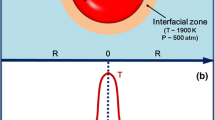Abstract
Advanced oxidation methods, like ultrasound (US), are a promising technology for the degradation of emerging pollutants in water matrices, such as sulfonamide antibiotics. Nevertheless, few authors report the degradation of sulfonamides by high-frequency US (>100 kHz), and limited information exist concerning the use of ultrasonic-driven processes in the case of sulfadiazine (SDZ). In this study, SDZ degradation was investigated with the aim to evaluate the influence of initial concentration, pH and US frequency, and power. Ultrasonic frequencies of 580, 862, and 1,142 kHz at different power values and SDZ initial concentrations of 25, 50, and 70 mg L−1 were used. The results show that SDZ degradation followed pseudo first-order reaction kinetics with k values and percent removals decreasing for increasing solute initial concentration. Higher SDZ percent removals and removal rates were observed for the lowest operating frequency (580 kHz), higher dissipated power, and in slightly acidic solution (pH 5.5). Addition of the radical scavenger n-butanol confirmed that hydroxyl radical-mediated reactions at the interface of the cavitation bubbles are the prevailing degradation mechanism, which is directly related to the pKa-dependent speciation of SDZ molecules. Finally, addition of H2O2 had a detrimental effect on SDZ degradation, whereas the addition of the Fenton reagent showed a positive effect, revealing to be a promising alternative for the removal of sulfadiazine.






Similar content being viewed by others
References
Bagal MV, Gogate PR (2014) Wastewater treatment using hybrid treatment schemes based on cavitation and Fenton chemistry: a review. Ultrason Sonochem 21:1–14
Boriani E, Benfenati E, Baderna D, Thomsen M (2013) Application of ERICA index to evaluation of soil ecosystem health according to sustainability threshold for chemical impact. Sci Total Environ 443:134–142
Gogate PR, Sutkar VS, Pandit AB (2011) Sonochemical reactors: important design and scale up considerations with a special emphasis on heterogeneous systems. Chem Eng J 166:1066–1082
Golash N, Gogate PR (2012) Degradation of dichlorvos containing wastewaters using sonochemical reactors. Ultrason Sonochem 19:1051–1060
Guo WL, Shi YH, Wang HZ, Yang H, Zhang GY (2010) Intensification of sonochemical degradation of antibiotics levofloxacin using carbon tetrachloride. Ultrason Sonochem 17:680–684
Hamdaoui O, Naffrechoux E (2008) Sonochemical and photosonochemical degradation of 4-chlorophenol in aqueous media. Ultrason Sonochem 15:981–987
Hoffmann MR, Hua I, Hochemer R (1996) Application of ultrasonic irradiation for the degradation of chemical contaminants in water. Ultrason Sonochem 3:S163–S172
Holm JV, Rugge K, Bjerg PL, Christensen TH (1995) Occurrence and distribution of pharmaceutical organic-compounds in the groundwater downgradient of a landfill (Grindsted, Denmark). Environ Sci Technol 29:1415–1420
Ikehata K, Naghashkar NJ, Ei-Din MG (2006) Degradation of aqueous pharmaceuticals by ozonation and advanced oxidation processes: a review. Ozone Sci Eng 28:353–414
Jiang Y, Petrier C, Waite TD (2002) Effect of pH on the ultrasonic degradation of ionic aromatic compounds in aqueous solution. Ultrason Sonochem 9:163–168
Lin CE, Chang CC, Lin WC (1997) Migration behavior and separation of sulfonamides in capillary zone electrophoresis. 3. Citrate buffer as a background electrolyte. J Chromatogr A 768:105–112
Madhavan J, Grieser F, Ashokkumar M (2010) Combined advanced oxidation processes for the synergistic degradation of ibuprofen in aqueous environments. J Hazard Mater 178:202–208
Manousaki E, Psillakis E, Kalogerakis N, Mantzavinos D (2004) Degradation of sodium dodecylbenzene sulfonate in water by ultrasonic irradiation. Water Res 38:3751–3759
Mishra KP, Gogate PR (2011) Intensification of sonophotocatalytic degradation of p-nitrophenol at pilot scale capacity. Ultrason Sonochem 18:739–744
Mohajerani M, Mehrvar M, Ein-Mozaffari F (2010) Recent achievements in combination of ultrasonolysis and other advanced oxidation processes for wastewater treatment. Int J Chem React Eng 8:1–81
Mohajerani M, Mehrvar M, Ein-Mozaffari F (2012) Using an external-loop airlift sonophotoreactor to enhance the biodegradability of aqueous sulfadiazine solution. Sep Purif Technol 90:173–181
Pang YL, Abdullah AZ, Bhatia S (2011) Review on sonochemical methods in the presence of catalysts and chemical additives for treatment of organic pollutants in wastewater. Desalination 277:1–14
Patil PN, Gogate PR (2012) Degradation of methyl parathion using hydrodynamic cavitation: effect of operating parameters and intensification using additives. Sep Purif Technol 95:172–179
Pradhan AA, Gogate PR (2010) Degradation of p-nitrophenol using acoustic cavitation and Fenton chemistry. J Hazard Mater 173:517–522
Quesada-Peñate I, Julcour-Lebigue C, Jáuregui-Haza UJ, Wilhelm AM, Delmas H (2009) Sonolysis of levodopa and paracetamol in aqueous solutions. Ultrason Sonochem 16:610–616
Shriwas AK, Gogate PR (2011) Ultrasonic degradation of methyl Parathion in aqueous solutions: intensification using additives and scale up aspects. Sep Purif Technol 79:1–7
Thompson LH, Doraiswamy LK (1999) Sonochemistry: science and engineering. Ind Eng Chem Res 38:1215–1249
Vassilakis C, Pantidou A, Psillakis E, Kalogerakis N, Mantzavinos D (2004) Sonolysis of natural phenolic compounds in aqueous solutions: degradation pathways and biodegradability. Water Res 38:3110–3118
Xiao R, He Z, Diaz-Rivera D, Pee GY, Weavers LK (2014) Sonochemical degradation of ciprofloxacin and ibuprofen in the presence of matrix organic compounds. Ultrason Sonochem 21:428–435
Acknowledgments
The authors express their gratitude to CNPq (National Council for Scientific and Technological Development), CAPES (Coordination for the Improvement of Higher Education Personnel), and FAPESP (São Paulo Research Foundation, grant no. 2008/57708-7).
Author information
Authors and Affiliations
Corresponding author
Additional information
Responsible editor: Philippe Garrigues
Rights and permissions
About this article
Cite this article
Lastre-Acosta, A.M., Cruz-González, G., Nuevas-Paz, L. et al. Ultrasonic degradation of sulfadiazine in aqueous solutions. Environ Sci Pollut Res 22, 918–925 (2015). https://doi.org/10.1007/s11356-014-2766-2
Received:
Accepted:
Published:
Issue Date:
DOI: https://doi.org/10.1007/s11356-014-2766-2




